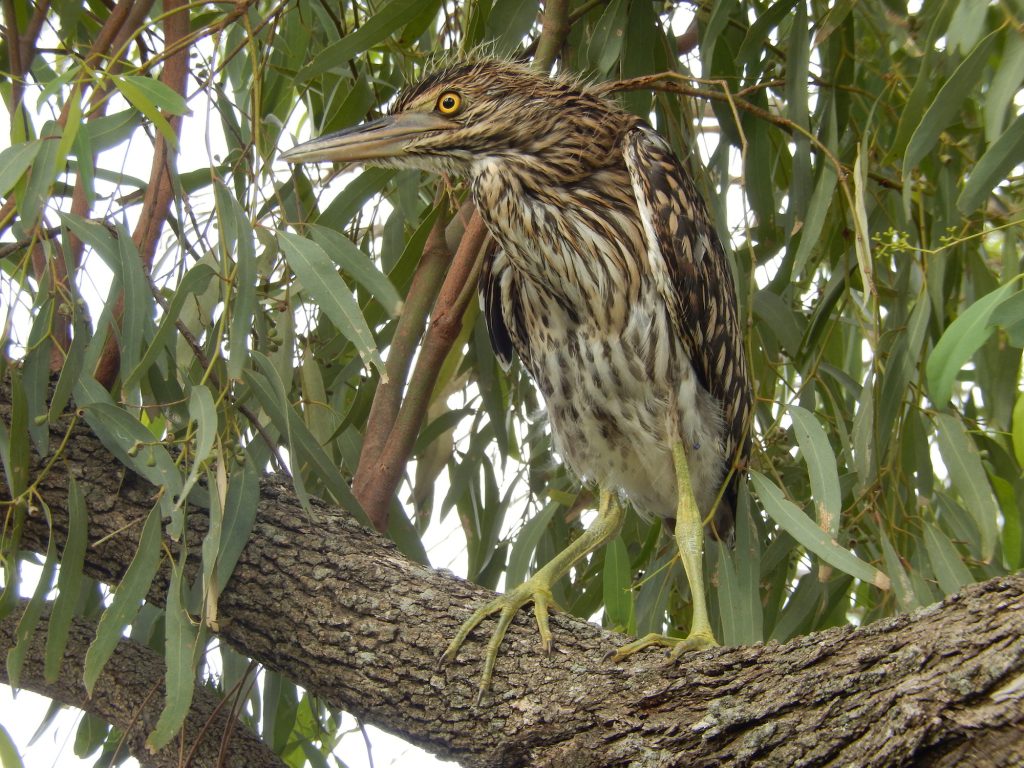The Australasian Bittern is a rarely seen, poorly known and globally threatened waterbird.
Australasian Bittern (Botaurus poiciloptilus): also known as Bunyip Bird, Brown Bittern or Bull Bird.
Conservation Status: Globally Vulnerable (IUCN); Nationally Endangered (EPBC) with National Recovery Plan launched in 2023, available here.
Distribution & Abundance: The IUCN estimates the total global population at 1000-2499 mature individuals, with a continuing trend of decline. The latest Australian population estimate is 1300, with around 700 in New Zealand and no recent records for New Caledonia. The areas with the largest numbers are south-eastern Australia, especially the Murray-Darling Basin, and the North Island of New Zealand, while small numbers persist in south-western Australia, south-eastern QLD, Tasmania and NZ’s South Island. The Riverina’s rice fields support 500-1000 in most years, the largest known breeding population.
Size & Weight: With neck stretched, can stand just over 1 metre tall. Body length: 66 –76 cm. Weight: females 571- 1135 g; males 875 –2085 g. Wingspan of 1050–1180 cm.
Identification: These bitterns do not roost in trees and only rarely occur in loose flocks of more than five. Smaller, tree-roosting Nankeen Night-herons, which often occur in flocks, are commonly mistaken for Australasian Bitterns. This is especially the case for immature night-herons that share the streaky brown and white plumage of Australasian Bitterns. Along the NSW coast, also check Black Bittern.
Call: Males make deep booms during breeding season, audible for about 2 kms. These booms were a key source of legends of Australia’s mythical Bunyip. Press play to hear the sounds of a Coleambally rice field in January 2016, including booming male bitterns and growling Southern Bell Frogs.
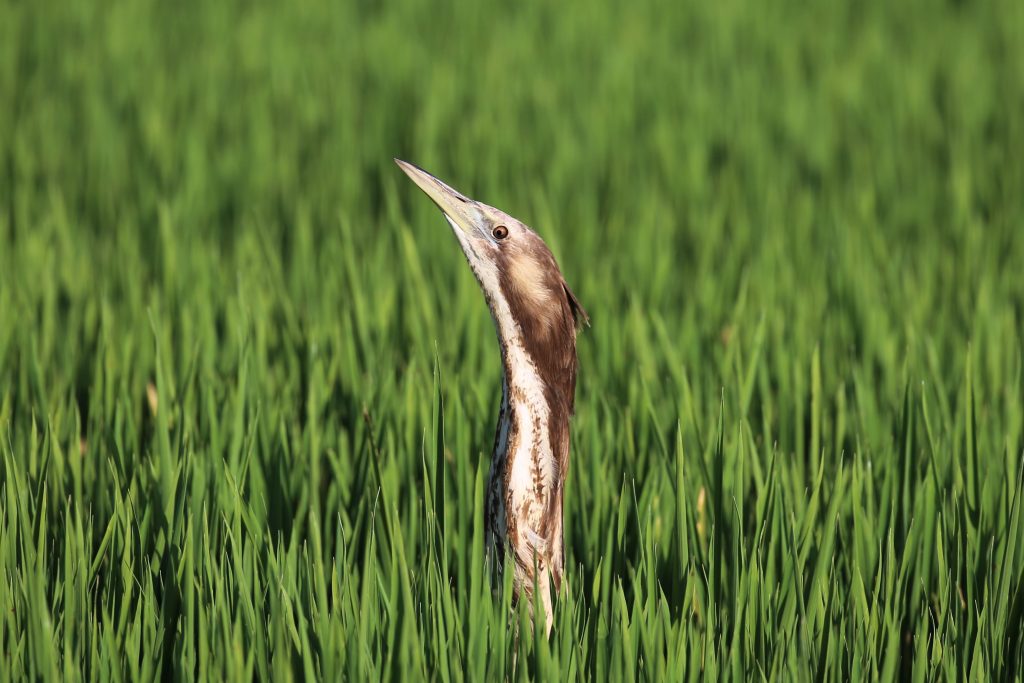
(Press play to hear call)
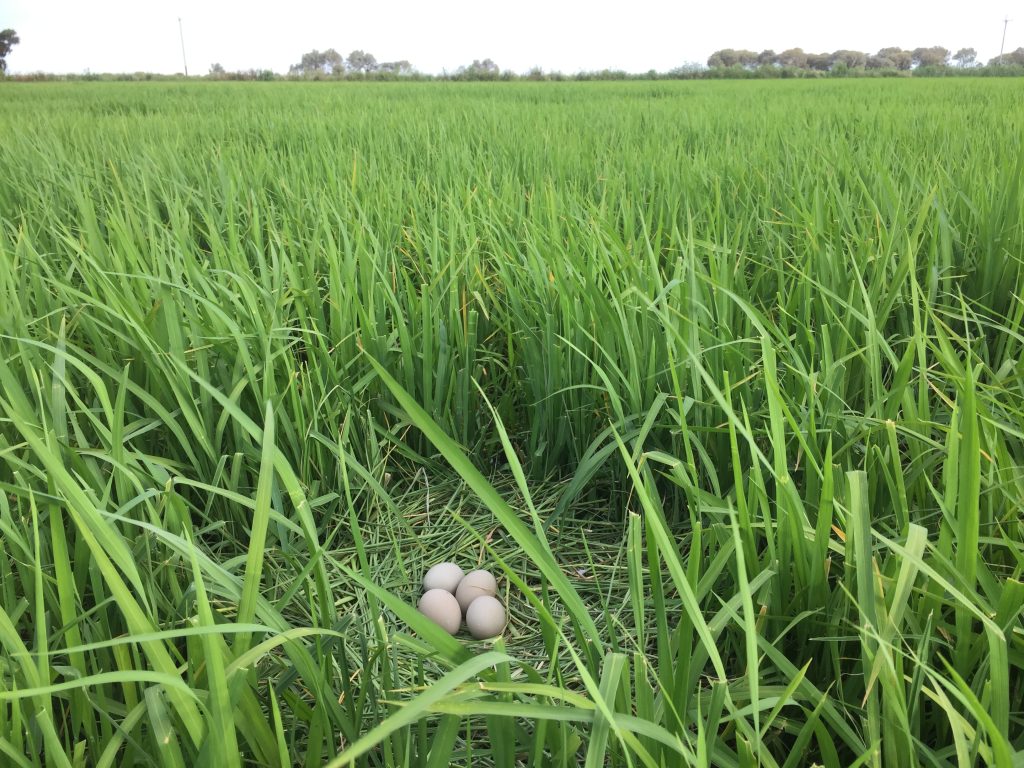
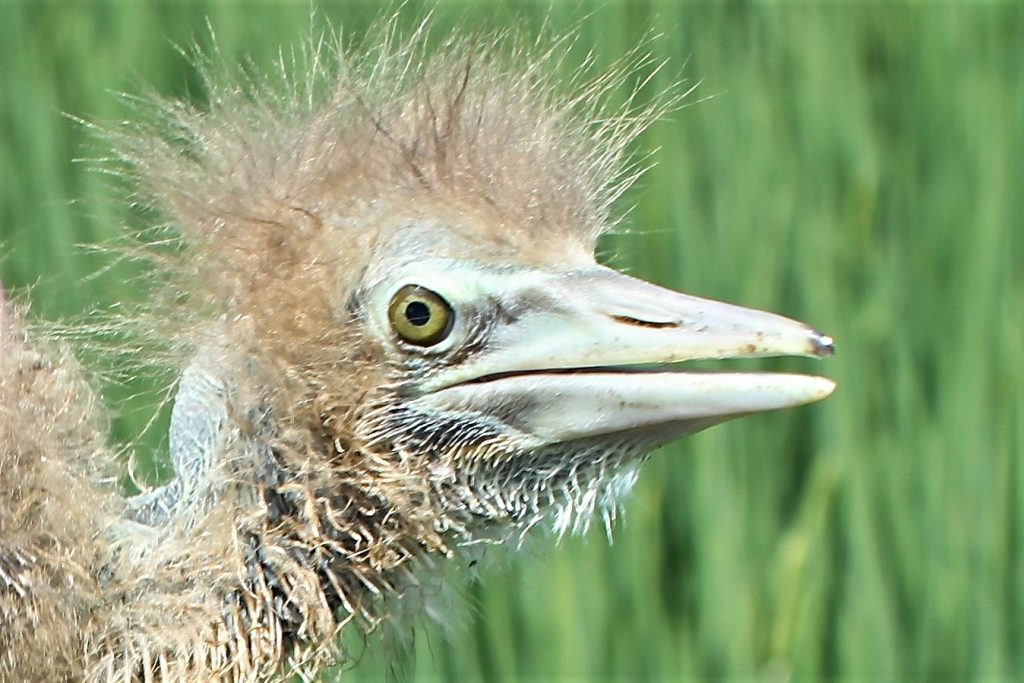
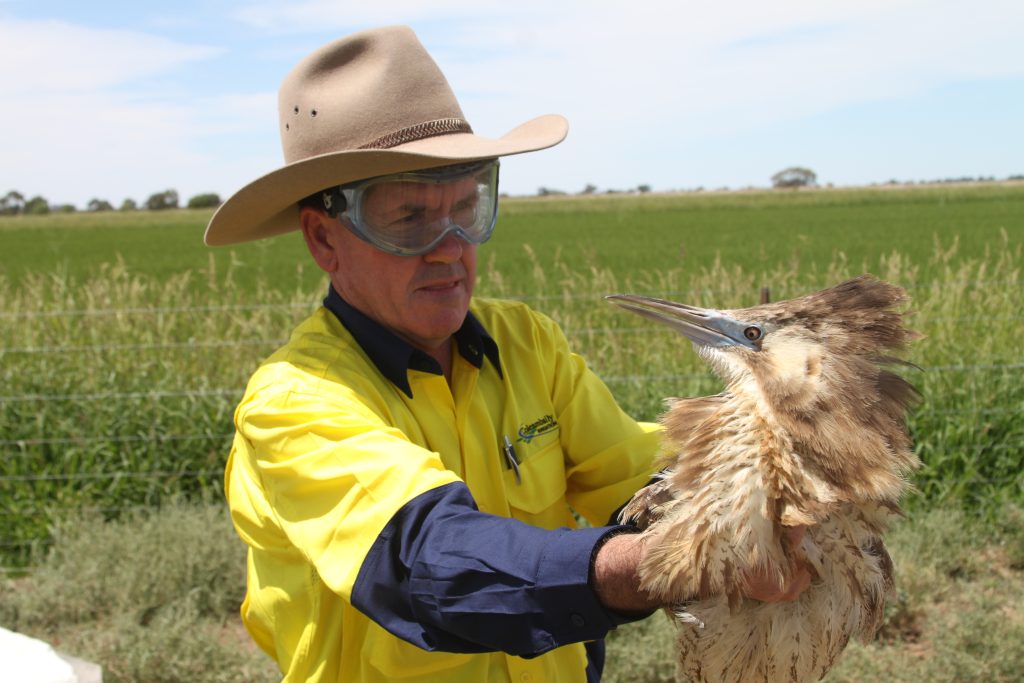
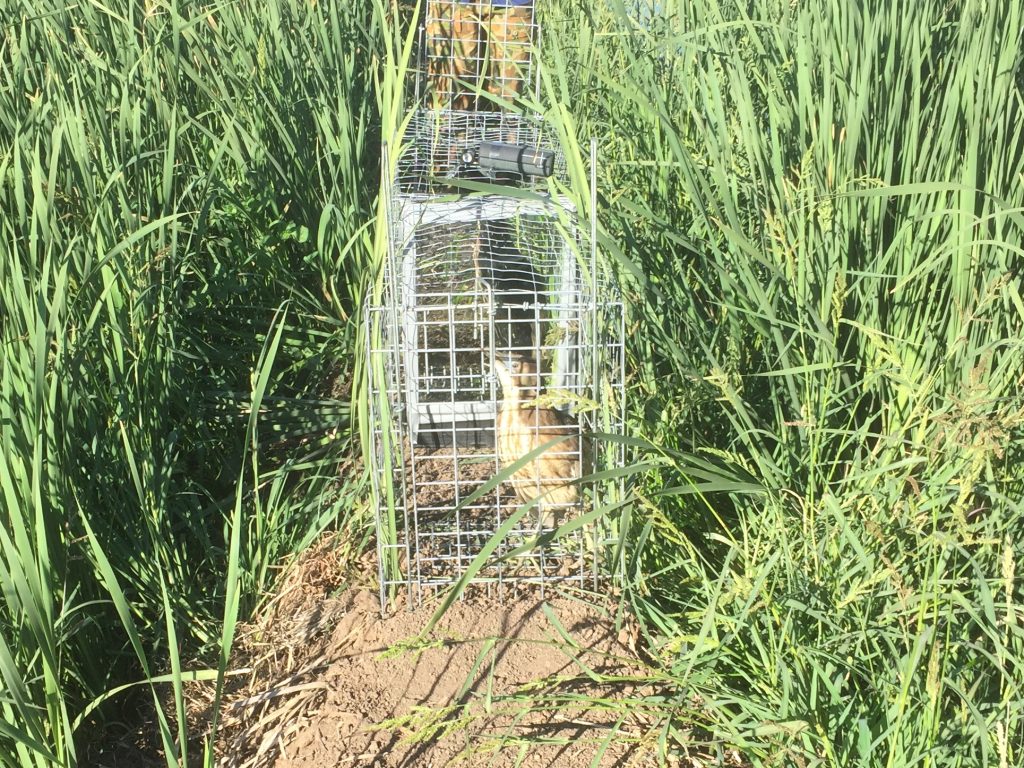
Habitat: Vegetated wetlands. Sometimes seen feeding in more open areas in water up to 30 cm deep, but rely on the dense cover of water plants to roost and breed in. In addition to rice fields, the most important bittern wetlands in the NSW Riverina are Cumbungi (Bullrush, Typha), Phragmites, Eleocharis, Lignum and Canegrass.
Diet: Fish, frogs, yabbies, mice, insects.
Breeding: Usually four or five eggs in well-hidden platform nest about 10-30 cm above water level. Incubation approx. 23 days; a further 7 weeks until chicks fledge but they leave nest after about two weeks and begin roaming. Appears that only female incubates and raises young. Polygyny (male with multiple females) highly likely, including observations of a single booming male with three nests/females in single rice paddock.
Movements: Satellite tracking of bitterns from Riverina rice fields has shown that approximately half of the population disperses 400-600 km at harvest time to coastal wetlands in NSW, VIC and SA for the non-breeding season, while others stay local. This movement pattern probably reflects an ancient evolved response to flooding of ephemeral inland wetlands with retreat to coastal drought refuges.
Closest Relative: Eurasian Bittern (Botaurus stellaris), while there are two other species in the Botaurus group; the American Bittern (Botaurus lentiginosus) and Pinnated Bittern (Botaurus pinnatus).
For more detailed general information about the Australasian Bittern, see the International Heron Conservation Page and the Australian Government’s Australasian Bittern Page.
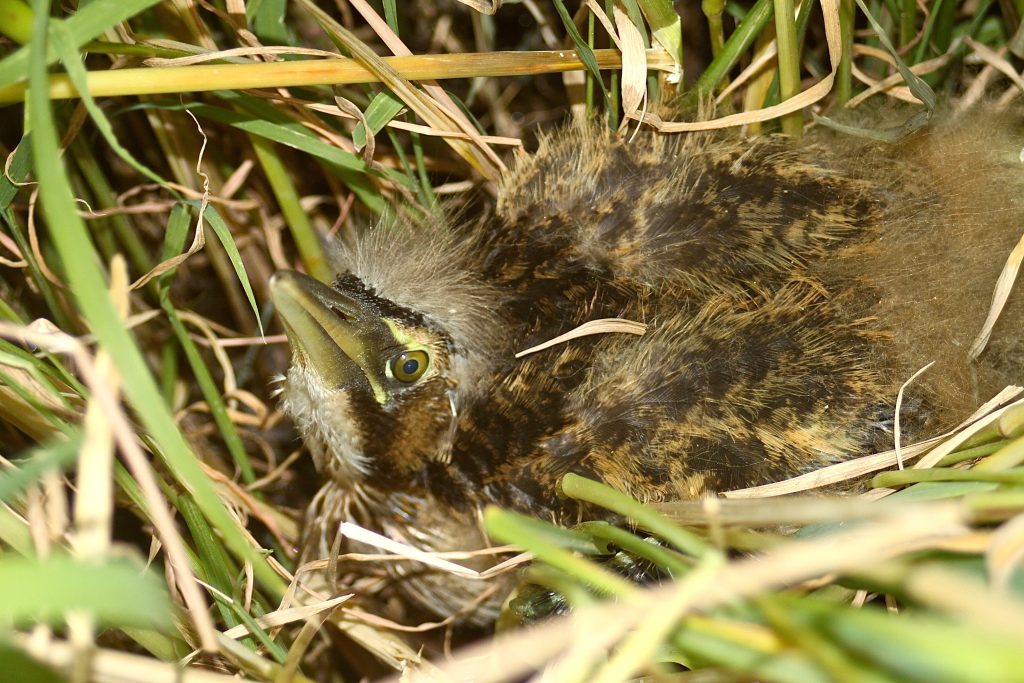
This 18-day old chick, already 50 metres from the nest, was found hiding in thick Barnyard Grass on a bank between two rice bays.
